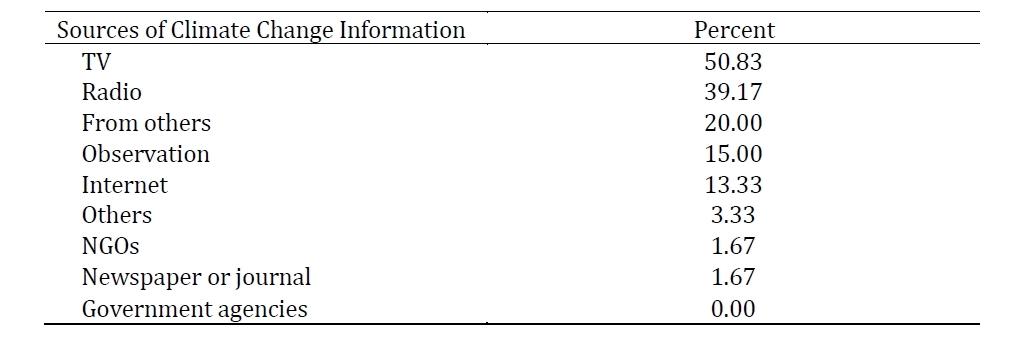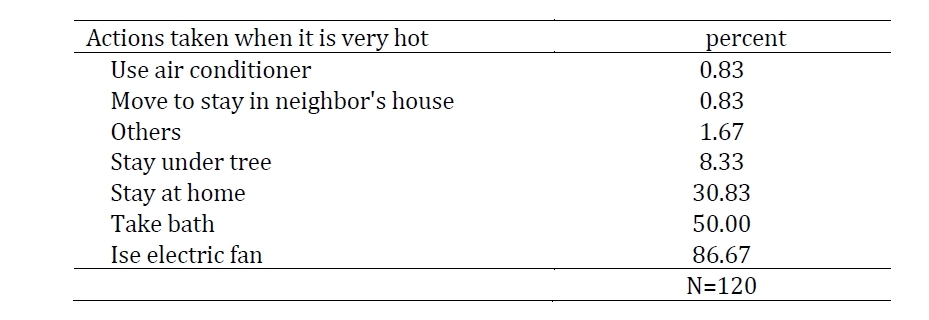Introduction
Battambang is a rice bowl of Cambodia. The total rice production in the province accounted for 8.5% of the total rice production of 9.3 million tons in 2013. Battambang Province is composed of 13 districts with 1.12 million people, making it the second largest province in terms of population following Kampong Cham (Cambodia Inter-censal Population Survey, 2013).
Battambang City, with around 140,000 inhabitants, is the second largest city in Cambodia. Its name comes from the legend of Bat Dambong, the “Disappearing Stick.” The city is situated along the bank of the Sangke River. People have lived in wooden houses along its banks for centuries. In 2014, the province got 1st place in a clean city competition organized by the Ministry of Tourism. When the province was associated with the Siamese (1795 to 1907), Battambang City had about 2,500 residents (Website of the Provincial Town Battambang, n.d.). With the speedy increase in urbanization, some slum areas in the province have been observed in areas along old railways and the Sangke River. According to IDPoor of the Ministry of Planning, which measures poverty in Battambang Province, in 2013, the poverty rate in Battambang City was lower than the average poverty rate in the province as a whole. The percentage of Poor Level 1 and Poor Level 2 together in Battambang City was 23.6% compared to 32% in Battambang Province as a whole. The Poverty Category was based on the score generated from a survey questionnaire. Poor Level 1 is the poorest or destitute category. Poor Level 2 is the next poverty category.
The world is becoming more and more urbanized. In 2030 the world’s urban population is projected to represent 60.2% of the overall population of our planet (United Nation Population Division, 2002). With the increase in urbanization, the number of slum dwellers also increases. According to UN-HABITAT (2003), 32% of the world’s total urban population lives in slums; some 43% of the urban populations of all developing regions combined live in slums (Bolay, 2006). A slum constitutes, in general terms, a densely populated area exhibiting substandard housing and a lower standard of living (Jorgenson & Rice, 2016).
According to Bolay (2006), without finding appropriate solutions to the housing problems of a majority of urban dwellers, public and private decision makers will not be able to meet the challenges of sustainable development. Cities are both a “paradise and a jungle” and there are “slums of hope” and “slums of despair” (Stokes, 1962, p. 189). Some people consider life in a slum as an opportunity to transition to middle class groups; others describe it as a poverty trap (Mberu et al., 2016, p. 2).
There is a concentrated disadvantage that is characteristic of many urban slums in terms of overcrowding and lack of suitable drinking water and sanitation, as well as non-durable housing construction (Jorgenson & Rice, 2016). In a panel analysis, infant and under- five mortality rates are positively associated with urban slum prevalence. Mberu et al. (2016), in their comparative analysis, found that in all countries, except India, slum children have much poorer health outcomes than children in all other residential domains, including those in rural areas, although treatment seeking was better among slum children compared with those in rural areas. Mortality and morbidity indicators were worse in slums than elsewhere. However, indicators of access to care and health service coverage were found to be better in slums than in rural communities. In addition to these health related issues, those living in slums are often the most at risk from events like floods, landslides and strong winds, which are likely to become increasingly frequent and severe because of climate change (Bicknell et al., 2009).
As climate change increases the frequency and severity of extreme weather events and hence possible disasters, it is becoming increasingly necessary to take steps to reduce the potential impacts of these events by focusing on actions that allow the affected populations to move beyond merely coping to adapting to them. Resilience is generally defined as the ability of a system to absorb disturbances, maintain structure and ways of functioning, and adapt to stress and change. In the context of urban systems, urban resilience has been defined as “the ability of a city or urban system to absorb disturbance while retaining identity, structure and key process” (Leichenko, 2011, p. 164). Partnerships between low-income communities and other urban stakeholders, including local government, and innovative financial mechanisms managed by communities, can lead to scaled-up action to address development and adaptation deficits (Archer, 2016).
This research project aims to identify the vulnerability of people in slum areas, systems of addressing vulnerability, and institutions responsible for addressing that vulnerability. A city that has increasing slum areas could pose a larger burden for the future generation if there are not well-functioning systems in place to make the city a slum-free city.
There is a strong connection between the socioeconomic conditions of the slums in Battambang and climate change, and vulnerability. According to a World Bank report issued in (2015), climate change hits the poorest people the hardest because they live in vulnerable areas with the fewest resources to help them adapt or recover quickly from shocks. As the effects of climate change worsen, escaping poverty becomes more difficult. In Battambang, climate change can affect the poor in a number of ways. First, climate change will cause food prices to increase as Cambodia’s food production relies on weather. The increase in food prices will increase the number of people who live below the poverty line. When people in slum areas become poorer, they will be vulnerable to drug use, beggar activities, or human trafficking.
Some poor people in Battambang are living on the bank of the Sangke River, which has a problem with landslides. Some parts of the roads along the river are disconnected by a landslide occurred in 2016 and some houses were already gone, in particular in 2017. Some poor living along old abandoned railroads have no clean water in the dry season, but get flooded in the rainy season. Those poor communities tend to have more limited adaptive capacities as climate change affects human settlement. First, the poor cannot afford adaptive technologies, such as improved building materials. Second, their ability to relocate to a less stressed environment is often limited by political/cultural constraints and resources. Finally, they are more dependent on local water and food supplies, with less ability to tap other markets when these local sources become less productive. The following will describe the research methodology, slum households’ characteristics, income and employment of people in slum areas, issues of climate change, and stakeholders’ view on climate change.
Research Methodology and Data
We collected data in 4 slum villages – Sophi Pir, Sophi Muoy, Chamkar Samraong Pir, which are located along the Sangke River, and Tuol Ta Aek, which is located along old abandoned railways. The survey was conducted through a purposive method with a sample of 120 households in those 4 villages in June, July, and August 2017 by a group of students who received training on research methodology provided by the University of Battambang through this research project. The average household size is reported to be 5 members by household heads. We interviewed 120 household heads in those 4 villages to investigate socioeconomic issues and climate change. Four-hundred-ninety-one household members were also interviewed about their employment and income.
Household Heads’ Characteristics
Most households in slum areas are led by female household heads. Of the interviewed 120 household heads in Sophi Pir, Sophi Muoy, Chamkar Samraong, and Tuol Ta Aek, 70.8% are female and the remaining 28% are male. The divorce rate is high in the slum areas. Twenty percent of household heads are divorced and 71 % are married (Table 1).
Like typical Cambodian families, of household size is large. The average household size is 5 people, and around 50% of households have between 4 and 6 members. Large families, that is, those with more than 7 members, are also present in slum areas, accounting for about 31% of the total households. Regarding settlement, we find about 40% started to settle in slum areas after 1991 when the Paris Peace Accords were signed. During that period, many people living in Khmer-Thai border were sent to live with their families in their hometowns by international organizations such as the United Nations. We also met an old female household head who moved from Svay Rieng province to live in the slum area located behind provincial hospital. She told us that she could not live well in Svay Rieng province because working on the farm was difficult due to floods and drought and she decided to settle in the slum area. Now she manages credit for the Community Development Fund (CDF) in her area that provides small loans to urban poor. The credit is provided by a government ministry for poor people in Cambodia. Her house was built on the public roads along with many other slum dwellers’ houses. Most of the dwellers in this area are from Prey Veng, Kompong Cham, and Khao I Dang refugee camps and most of them have started to settle in the areas since 1991.
The people in slum areas can live on their land but cannot sell their land to other people because the land title is not provided to them by the provincial authority. About 80% of household heads do not have land titles. Although land business has become popular in the province, buyers are warned they should not buy land in those slum areas. The provincial authority has the power to relocate people when the area is needed for future development. Most of the houses in slum areas have been built on the road, close to railways and along rivers. Those areas will need to be developed into public parks or public roads to make the province more attractive for public use in the future.
Of the 120 household heads, about 97% are older than 25, and 20% of those persons who are older than 25 have less than a primary school education. However, men seem to be more educated than women as only 9% of men had less than a primary school education, compared to 24% of women. Higher shares of men than women have completed secondary and post-secondary education. About 42% of men, as well as women, have a primary school education level (Table 2).
Income and Employment of People in Slum Areas
The majority of people living in slum areas are young. Of the 491 of household members who responded to our interview, about 20% are under 9 years old, and about 60% are younger than 30 years old (Figure 1).
Income security for people in slum areas can be fragile as the majority of income earners earn income on a daily basis and about 50% of slum dwellers are not income earners. About half of the total people in surveyed slum areas are working for daily or monthly income. The majority of income earners earn income on a daily basis. Of the 491 individuals living in slum areas, 28% earn income on a daily basis, 20.5% on monthly basis, and the remaining half do not earn any income. Some of those who do not earn income do household chores or go to school. The average income was $7.34 on a daily basis and $164 on a monthly basis (Table 3).
Most of the monthly income earners work in restaurants and construction sites. However, most of the daily income earners work as sellers and construction workers. Recently, beer gardens have been springing up in Battambang City and it becomes one of the destinations of job seekers to work as waiters or beer girls. A construction worker can earn about $225 per month or $7.40 per day (Table 4). We also found 8% of people in slum areas went to work in Thailand seasonally. Other jobs that many slum dwellers do include moto-taxi drivers, hotel cleaners, restaurant waiters, domestic workers and sale assistants.
There is evidence of child labor but the number is low. The percentage of persons aged between 7 and 15 and who work represent about 4% of the income earners. They work on a daily basis. Some of those children went to work with their parents in construction sites or went around the city to collect garbage such as water bottles and plastics for selling to recycling companies.
The age-earning profiles for daily income earners and monthly income earners are not smooth bell-shaped curves, as shown in Figure 2. The upward slope of the curves suggests that daily and monthly income earners can earn more when they become older.
Daily income of daily earners reaches its peak level when an individual worker is between 30 to 40 year old. However, monthly income reached its peak when the income earners are between 50 to 60 year old. This difference in peak level reflects the fact that most of the daily income earners engaged in hard labor, such as construction, as shown in Table 4 .
There is a significant difference in income across those 4 villages for both types of income. Slum dwellers in Sophy Muoy earn the highest monthly income, while slum dwellers in Chamkar Samroang earn the highest daily income, as shown in Table 5 below. The ANOVA test cannot reject the hypothesis of the same mean across those 4 villages.
People in urban areas seem to be living above the poverty line. The poverty line in urban areas in Cambodia in 2009 was KHR 4,352 (National Institute of Statistics, 2013). When dividing the whole income by the number of people, we find the average income per person per day is about $3, although this does not take into account inequality in the income distribution. There is dispersion in income distribution in the two groups of income earners as shown in Figure 3 below. This may be one of the incentives that allows urban slum areas to attract people from other poor areas of the country.
Issues of Climate Change
Perception about Climate Change
Almost all people have heard the word “climate change.” Ninety percent of the 120 household heads said they have heard about climate change. In addition, 93% said they experienced climate change in recent years, in particular after 2013. The spread of TV and radio as well as Internet through smart phones allows people in slum areas to get information about climate change. People in Cambodia started to use smart phones to disseminate information, in particular for young people, through Facebook. About 51 % of respondents said they heard of climate change via TV, 39% via radio, and 13 % via the Internet (Table 6). About 10 years ago, most people went to Internet cafés to use the Internet or to check email. But the recent development of Internet connections provided by telephone service providers allows people to use the Internet more easily at home. As a result, many Internet cafés have disappeared recently.
Types of Climate Change and Its Effects
Most people in Cambodia feel that temperatures have increased. The three most major climate changes that people in slum areas perceived are hot weather, heavy rain, and typhoons. About 87% of the 120 household heads responded that they experienced very hot weather, 79% heavy rain, 60% typhoon, and 43% flood (Figure 4). Some people who lived along the Sangke River are also vulnerable to landslides. A few houses were washed away by a landslide in 2017.
Climate change affected the health of people in slum areas. About 90% of household heads in slum areas report that their health was negatively affected by climate change. People sometimes have diarrhea when the areas get flooded. When sick, the majority of people in slum areas go to the hospital or pharmacies to buy medicine. Private pharmacies have been accessible in almost all areas of the city. About 32% went to the pharmacy and 32% went to the hospital when they got sick. Some 15% of them went to clinics to have health treatment (Table 7).
Hot weather is the most severe climate change that affects people living in slum areas. About 46% of slum residents strongly agree that hot weather affected their living, and 37% agreed. Only 13% and 16% strongly agreed that flood and heavy rain affected their living, respectively (Table 8).
Climate Change Response
When the weather becomes very hot, people in slum areas use electric fans, take a bath, or go to stay in other people’s houses, About 80% of respondents used elecric fans to cope with hot weather, 50% took a bath, and some 8% moved to stay under tree (Table 9).
In response to climate change, 22% of the total sample said they planted trees and 24% were involved in waste management activities (Table 10).
In recent years, there have been some NGOs providing climate change trainings. The trainings mainly focus on how to respond to climate change, how to adapt to climate change, and what causes climate change. In our survey we found about 28% of the 120 household heads attended trainings on climate change. Most of the trainings were conducted after 2013 by NGOs and village chiefs (Figure 5).
However, the majority of the people in slum areas don’t want to move out to live in other places. About 33% of slum dwellers want to move out while the remaining 65% don’t want to move out. This reflects the fact that when there is no suitable resettlement plan, the slum areas in the city will become more populated and it will be a challenge to make the city slum-free in the future (Table 11).
Access to Electricity, Water, and Credit
In our survey, we found that every household has access to electricity. The average electricity cost per month for an average household was $12. However the cost varies depending on the activities of each household as shown in the following Figure 6. Like many other areas of the country, electricity connection has performed far better than water connection. Most rural areas in Cambodia also have access to electricity but they cannot connect to clean water.
People in slum areas used rain water, public water, and pure drinking water for drinking. About 50% used pure drinking water sold by private companies. Many companies in the city produce drinking water. Some households also connected to public water and about 25% use this water for drinking (Figure 12). Some water suppliers use truck with large container to carry water to supply to villagers. Villagers call this kind of water supply “car water”. As some people live along the river, they can drain river water via a pumping machine to their houses for drinking. Some people in slum areas who do not connect to public water raised some issues about the connection fee, which is expensive for them. Uncertainty about when they may be evicted also affects their decision to connect to public water.
Not many people in slum areas borrowed money. About 34% of household heads have borrowed money. About 60% of the borrowers borrowed from banks and microfinance institutions (MFI). Seventeen percent borrowed from the community and the remaining 22% borrowed from other sources such as friends (Figure 7). To borrow money, some people submit their land title and some use their motorbikes as collateral.
Institutional Framework and Stakeholders’ Views on Climate Change
There have been various institutions from the international level to the local level dealing with climate change. At the international level, the Paris climate agreement which came into effect in 2016 was aimed at dealing with greenhouse gas emissions mitigation, adaptation, and finance starting in the year 2020. As of October 2017, 195 members of the United Nations Framework Convention on Climate Change (UNFCCC) have signed the agreement, 168 of which have ratified it. Most developed countries emit carbon dioxide, which is thought to be one of main drivers of climate change. This negative externality has posed a cost in developing countries. Countries have faced the challenge of mainstreaming and integrating climate change into national planning and development processes.
At the national level in Cambodia, the Department of Climate Change, General Secretariat of the National Council for Sustainable Development is the core agency responsible for climate change activities. Recently, it coordinated the Cambodia Climate Change Alliance (CCCA), which is a multi-donor initiative funded by the the European Union (EU), the UN Development Programme (UNDP), Swedish International Development, Cooperation Agency (SIDA), and the Danish International Development Agency (DANIDA) to strengthen the national system and capacity to spuport the coordination and implementation of Cambodia’s climate change response. The approach of CCCA is to focus on capacity building and institutional strengthening targeting key national institutions, subnational authorities, and civil society.
At the local level, many NGOs have worked with local authorities to help urban poor people to adapt to and mitigate the risks associated with climate change. In Battambang City, some non-government organizations (NGOs) have collaborated with local governments such as commune authorities to provide training about the causes of climate change, the effects of climate change, and climate change adaptation. NGOs also help reduce the vulnerability of poor communities through providing education and training about how to mitigate the risks associated with climate change.
Some NGOs, such as Cambodian Children’s Trust (CCT), worked directly to support poor children in slum areas though providing education, in-kind subsidies in the form of rice, and child care services. The vision of CCT is to see a Cambodia free from poverty, where all children grow up in families. We interviewed a boy whose parents are disabled and working in Banteay Meanchey as beggars. He is living with his grandmother who stays at home, taking care of a few children. This boy, aged about 7 years old, goes to an education center run by CCT in the morning to study English language, Khmer language, and math. CCT provided breakfast and lunch as incentives to study. In addition, as the family is living in poverty, 50kg of rice was also provided by CCT every 3 months. CCT had its own truck or Tuk Tuk to collect children in poverty areas to study in its managed center. In addition to education provided by CCT, the child also went to public school in the afternoon. In Cambodia, public education at the primary and secondary levels is free. However, in the city now there are a growing number of students who are registered at private schools, in particular at private schools that provide bilingual education in English and in Khmer. This tells us that kids in slum areas may have better education opportunities than kids in rural areas, as there are a variety of education centers in the city.
Another NGO called Cambodian Education and Waste Management (COMPED) in cooperation with local authorities’ deals with the waste crisis, improves the environment, and reduces greenhouse gas emissions by reducing the amount of organic waste disposed into dump sites by promoting composting. Solid waste in the city is one of the main causes of many kinds of diseases if not well managed. The organization also provides more educational opportunities for poor and disadvantaged children and youths.
In addition to the above institutional arrangements, the poor have been provided with a mechanism to deal with risks of income fluctuation. In a slum in Chamkar Somrong Pir, which is located behind a provincial hospital, a community development fund (CDF) is managed by a community chief to provide funds to its members. Some members borrowed money for small businesses such as selling sugar cane juice or to smooth consumption when breadwinners fail to find enough income for supporting their household’s spending.
According to our interview with the head of Department of Land Management, Urban Planning & Construction of Battambang, people who are living on plots of land along the river, which are state properties, can continue to live there but they don’t have property rights to transfer and they don’t have a land title. The state does not have a policy to evict them from state-owned land, but if the state needs to develop the land, the state will ask them to move to other places without any compensation. However, if the state has some budget available, the people can receive some compensation. The community development fund was operated under the umbrella of the Urban Poor Development Fund (UPDF), which aims at improving housing and the living conditions of people in urban slums through grants from outside sources and group savings in Phnom Penh and other provincial towns. However, the community leader told us that the interest rate on loans was 2% per month, which is still very high because much of the fund was borrowed from UPDF Phnom Penh, which charged an interest rate of 1%. The default rate is low because the community leader who is the lender lives close to borrowers and thus can monitor the activities of borrowers well even though borrowers don’t need to provide collateral, such as land titles, to get funds. Whether the Urban Poor Development Fund (UPDF) is successful or not in providing housing and improving slums is ambiguous (Phonphakdee et al., 2009).
The head of the Rotanak commune mentioned that most of the people living in the commune are government officials, businesspeople, workers, and craftsmen. Regarding the impact of climate change, he told us that climate change caused people to get sick. People living in the Rotanak commune have good sanitation and do not have a shortage of water. About 99% of the people use the state-run water supply service and the remaining 1% who are poor do not have the capacity to connect to state-run water. Almost all people have access to electricity at a reasonable price. Because the temperature is increasing, the demand for electricity, in particular for utilizing electric fans, also increases. He also stated that many people in his commune were in debt and there was a drug use problem. However, the problem of drug use has declined because of the government’s crackdown.
People in his commune have experienced climate change issues including flooding and an increase in temperature, which causes people to get sick. People who live along the Sangke River are hard hit by climate change, in particular landslides. In his commune, there are some international organizations that help to disseminate information on climate change, and he has a plan to plant trees and to establish reservoirs for holding water for the dry seasons to mitigate the effects of climate change.
Conclusions
This research focused on the economic situation of slum dwellers in 4 villages in Battambang City and how those people are affected by climate change. Slum dwellers can earn income on a daily or monthly basis, and their income is higher than the poverty line of KHR 4,352 per day. We find that the major effect of climate change in the areas is hot weather. Most of them worked in construction sites or restaurants or as shop assistants. Most of the surveyed individuals obtained information about climate change through TV and radio. Hot weather, heavy rain, and typhoons are the top three climate issues that slum dwellers experienced. When the weather becomes very hot, slum dwellers use fans, take baths, or move to stay in their neighbors’ houses. In recent years, in particular after 2013, some NGOs have started to provide climate change trainings to people in slum areas. Although they experience climate change, the majority do not want to move out of slum areas. Regarding electricity access, we find that all slum dwellers use electricity. In contrast, only about 25% of people in slum areas have access to clean public water supply due to high connection fees. Some of them buy pure drinking water from private water supply companies for drinking. Because most people in slum areas do not have land titles, not many people borrowed money from banks and MFIs. It seems that there have been no concrete plans for the resettlement of people in slum areas. This may slow down the process of the city development in the future as more people may move to live in slum areas. Many NGOs have worked with local authorities to address issues of education of children, climate change adaptation, housing, and waste management. However, bigger projects undertaken by NGOs as well as by local authorities to address the issue of landslides have not been observed during our study period.
This research suggests that slum dwellers in Battambang City have many opportunities to have access to water, electricity, education, and health care. They have received some support from NGOs, as well as from the government. However, there is a lack of job opportunities as some slum dwellers earn income on a daily basis and some move to work in other countries, such as Thailand. Some slum dwellers living along the Sangke River are threatened by landslides and housing insecurity as most of them don’t have secured land titles. For the better beauty of Battambang City, the authorities in charge may design and implement a better policy for the relocation of slum dwellers, while also providing more job opportunities. Better measures to mitigate landslides should also be undertaken.
Appendix
Biographical Notes
Hay Chanthol is a lecturer in the Faculty of Sociology and Community Development of the University of Battambang. Previously, he worked in International Finance Corporation as an analyst in investment climate team and as a young economist in the Ministry of Economy and Finance. He also spent most of his time teaching economics at private universities such as Pannasastra University in Phnom Penh prior to joining the University of Battambang. His research interests include economics development and macroeconomics. He obtained his master’s degree in economics from the University of Tokyo, Japan.
He can be reached at the University of Battambang, National Road 5, Sangkat Preaek Preah Sdach, Battambang City, Battambang Province, Cambodia or by email at <hchanthol99@yahoo.com.>
Rem Samnang is a lecturer in the Faculty of Sociology and Community Development of University of Battambang. He handles some courses such as Development, Economic Development, and Environmental and Natural Resource Economics. He also had a lot of work experience with non-government organizations. He obtained his master’s degree in business administration from the National University of Management, Cambodia. He can be reached at the University of Battambang, National Road 5, Sangkat Preaek Preah Sdach, Battambang City, Battambang Province, Cambodia or by email at samnang.rem@gmail.com.

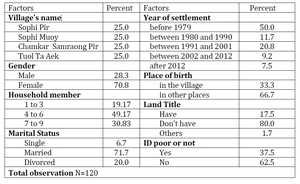
.jpg)


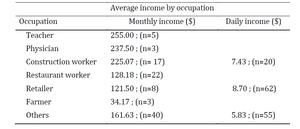

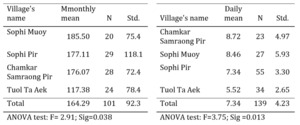
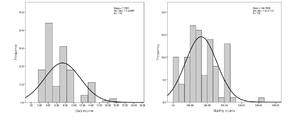


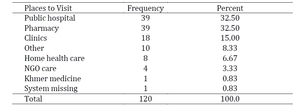





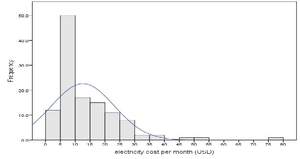

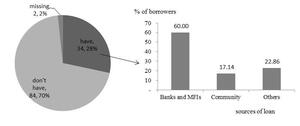
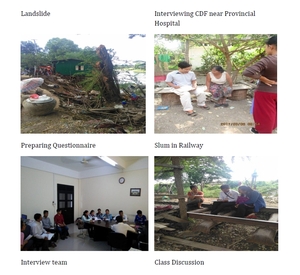
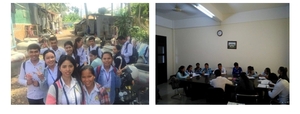

.jpg)






